As you may know, our BWO car and our driver/guide cover many miles across Ghana. Last month, we decided it was time to explore more of Ghana ourselves. While Agyapong and I were already familiar with some of the destinations, the kids and my sister from Accra had never been there. We also visited four new places for us in northern and western Ghana. In this blog, I’d love to share more about Wechiau, Bui National Park, Tanoboase, and Owabi Wildlife Sanctuary — and of course, I’ll briefly touch on the other spots we visited too!
Our Journey to the North
We had only roughly planned our trip — meaning we knew which attractions we wanted to visit during this road trip through Ghana, but aside from Belgha Hostel near Mole National Park, we hadn’t booked any accommodations in advance. Almost every village in Ghana has a guesthouse or hotel, and luckily, our stomachs can handle just about anything. This turned out to be a big plus: after a few days of omelets for breakfast and fried rice or jollof rice as our go-to lunch and dinner, we secretly started craving a bit more variety and fresh vegetables.
Although we’re used to the local cuisine and can eat almost everything, this journey made me appreciate even more how special it is that our BWO kitchen serves varied meals with plenty of vegetables every day. It’s exactly that variety and attention to fresh ingredients that our guests rave about — and now I understand why better than ever!
Sacred Monkeys in Boabeng Fiema
Our first stop was Boabeng Fiema, a village where monkeys are considered sacred and live in harmony with the people of these two villages. It’s fascinating to see how this symbiotic relationship works — how the community strives to protect the ecosystem while the benefits flow back into the local population. Click here to read more about Boabeng Fiema.
You can feed the Mona monkeys peanuts or bananas; they approach you curiously and sometimes even jump onto your shoulders. The black-and-white colobus monkeys, with their impressively long tails, can be admired from a bit of a distance. We especially enjoyed watching a young colobus monkey practicing his jumping and swinging skills.
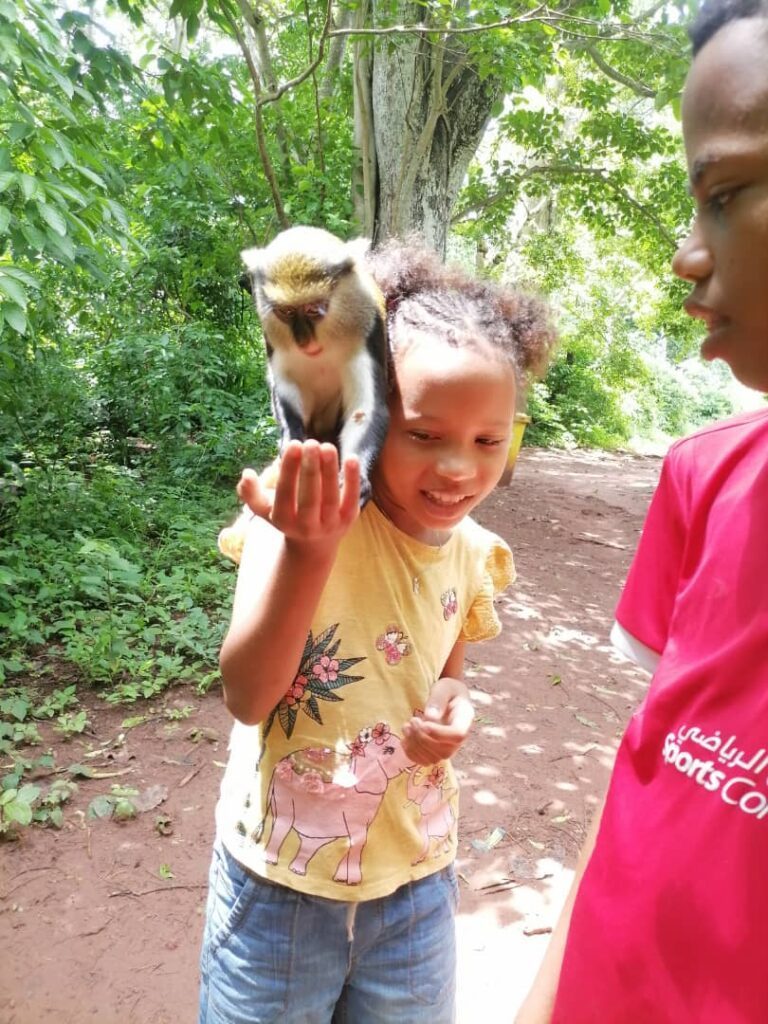
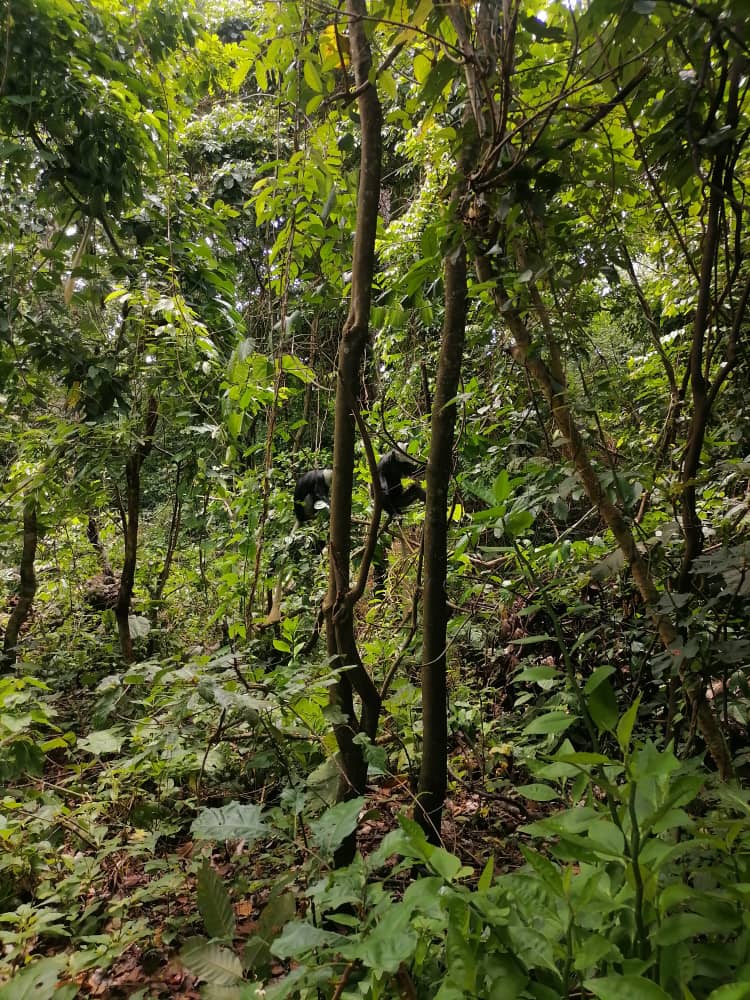
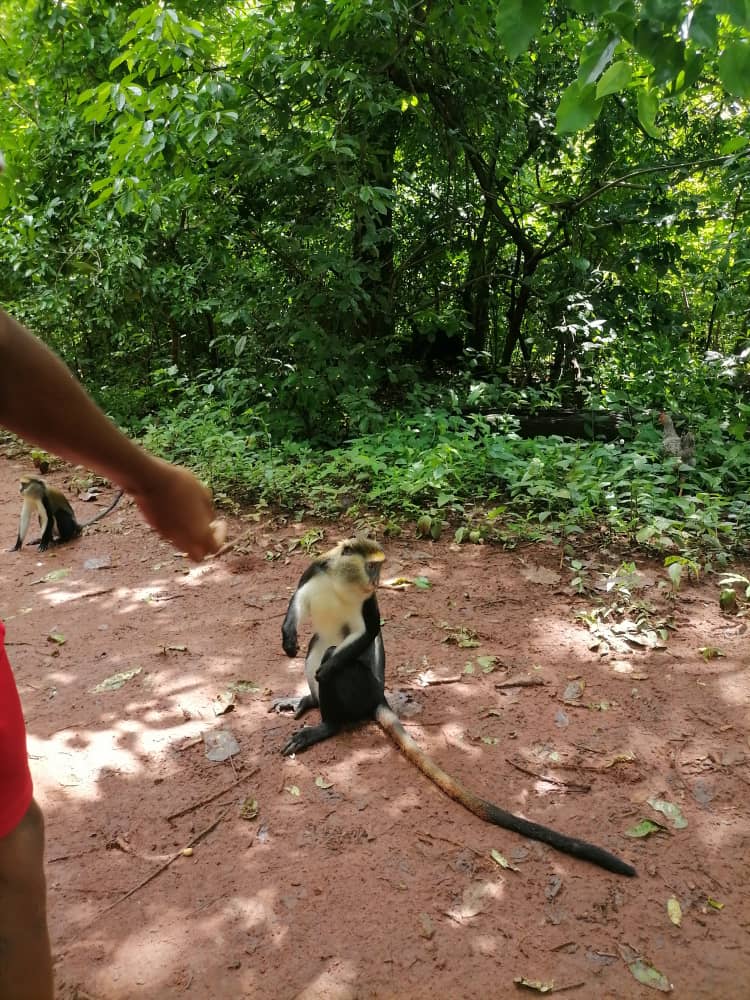
Climbing the Steep Rocks of Tanoboase
In Tanoboase, you’ll find impressive rock formations and caves that are a sacred place for the local community — the Tanoboase Sacred Grove. For centuries, these caves served as shelters during wars, and according to legend, the god Tano appeared here and commanded the people to protect the forest. During a guided walk, you’ll learn more about the spiritual significance and enjoy stunning views of the surrounding landscape. Your visit also contributes to the preservation of this unique ecosystem and supports the local community.
Although Agyapong spends a lot of time in this area, he had never been to this fascinating place before. One of his friends, who is both a doctor and a caretaker of the site, took us to the cave and shared the history with us — a truly captivating story.
Then the climb began — and believe me, you really have to work for those breathtaking views. I’m not fond of heights and quickly became the family’s laughing stock, but luckily they helped me through it. It was absolutely worth it! There is also a very tall and steep rock face that used to be climbed once a year by suitors. Only the men who reached the top first were allowed to marry the bride they were competing for. And yes, Agyapong shot up to the top (you can spot him in the photo if you look closely), but that doesn’t mean we’re getting married! 😉
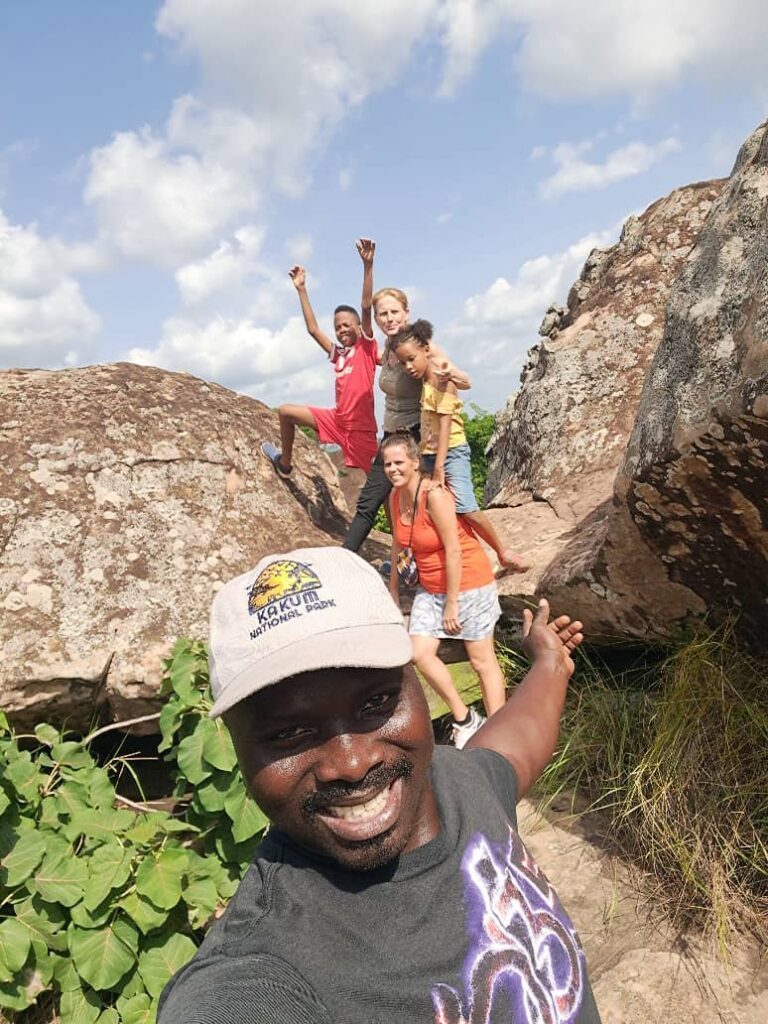
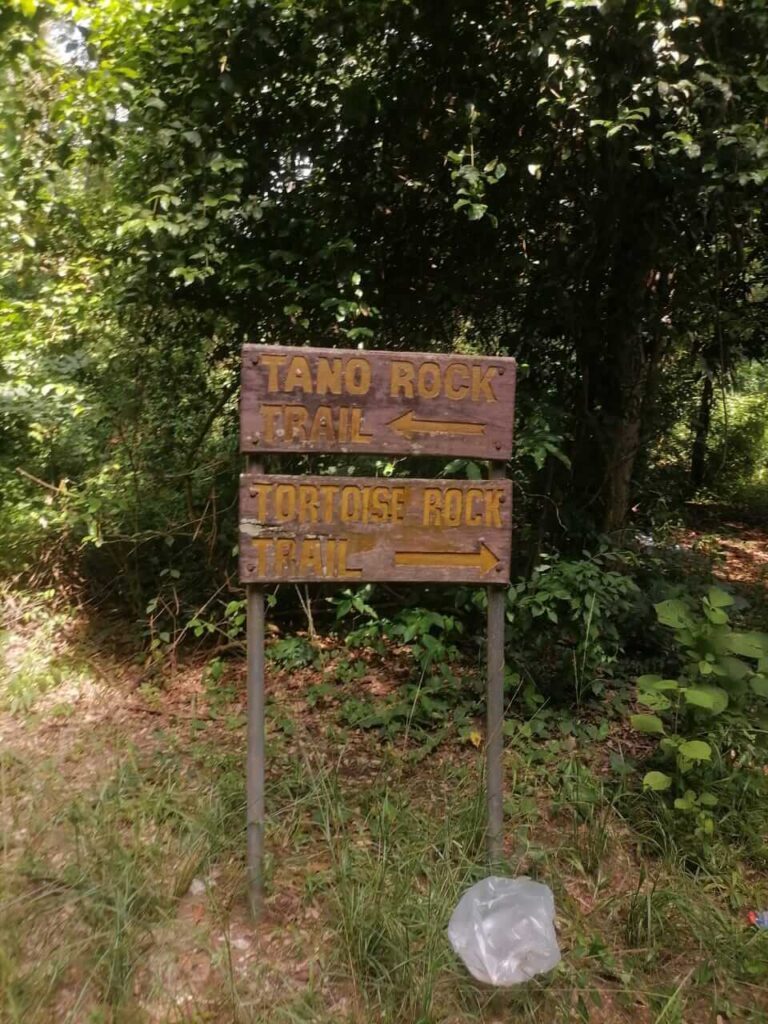
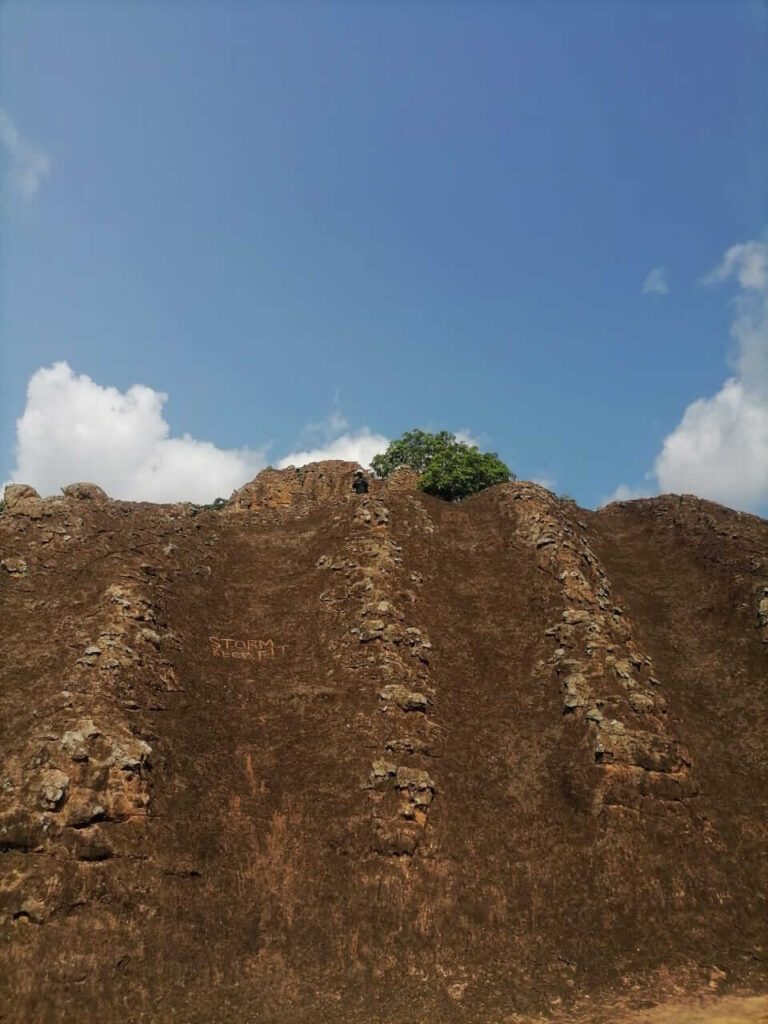
The Mighty Waters of Kintampo Falls
We had planned to visit the waterfalls on the same day, but due to a minor car malfunction and a heavy downpour, we decided to look for a guesthouse instead. The wallpaper nearly made us dizzy, and the food took quite a while to arrive, but luckily the local patrons at the hotel bar made for good company.
The next morning, we set off early to the falls. Thanks to the rain the night before, there was a lot of water flowing. According to a sign at the site, this isn’t actually due to the rain but because “the water rises when there are many visitors” — something spiritual, apparently!
We decided to skip the suspension bridges. Still, both behind the upper waterfall and at its base, the place remains special. You can even ‘swim’ in the natural pools. The water’s color was affected by the heavy rain the night before our visit.
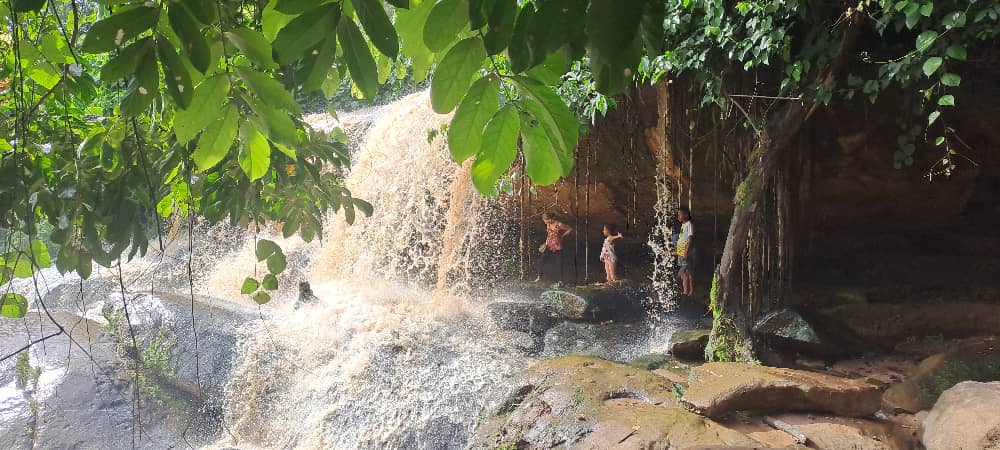
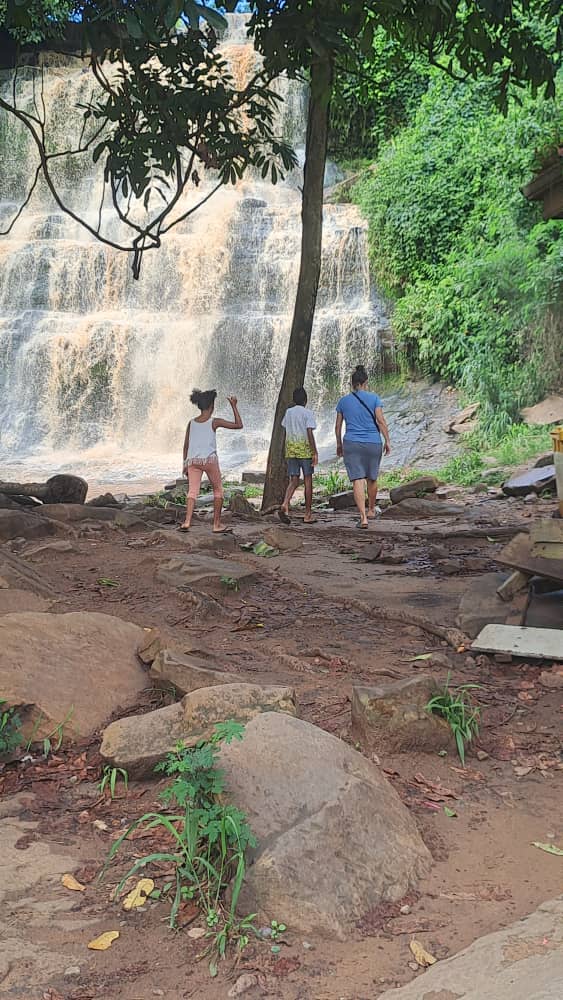
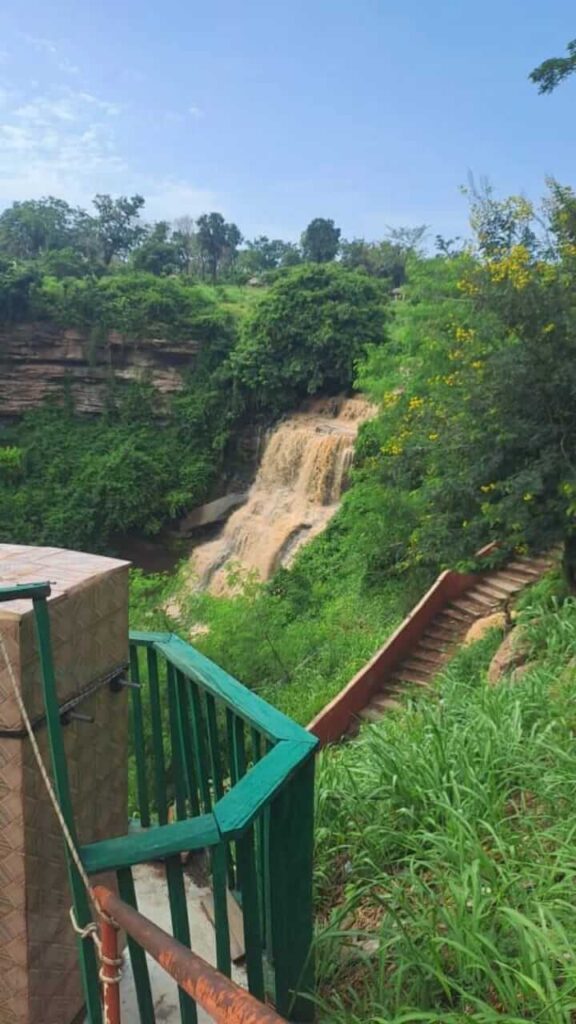
Stopovers in Fufulso and Larabanga
From Kintampo, we continued our journey toward Mole National Park. At the junction where you can go either to Tamale or Damongo, we were quite hungry. On the lookout for food, we spotted a woman selling indomie (noodles), but no one felt like eating that. So we asked if we could buy some fried eggs instead. She agreed! Meanwhile, I went to find drinks and bread and came across wagashi — local fried cheese.
When I returned, the indomie lady asked Agyapong if we wanted to fry the eggs ourselves on her coal pot. Of course! We enjoyed our improvised lunch with a view over a beautiful kraal village.
Larabanga is a village just before Mole National Park and is home to one of the oldest mosques in West Africa: the famous Larabanga mud-and-stick mosque. The kids protested because they were tired and just wanted to get to Belgha. But Mom (that’s me) insisted they had to see the mosque, especially since they learn about it at school.
I didn’t have great memories of it before, but this time it was different: there’s now a visitors’ center and a guide who clearly explains the history of the mosque and Larabanga. You’re not allowed inside the mosque, but by visiting, you do support the local community.
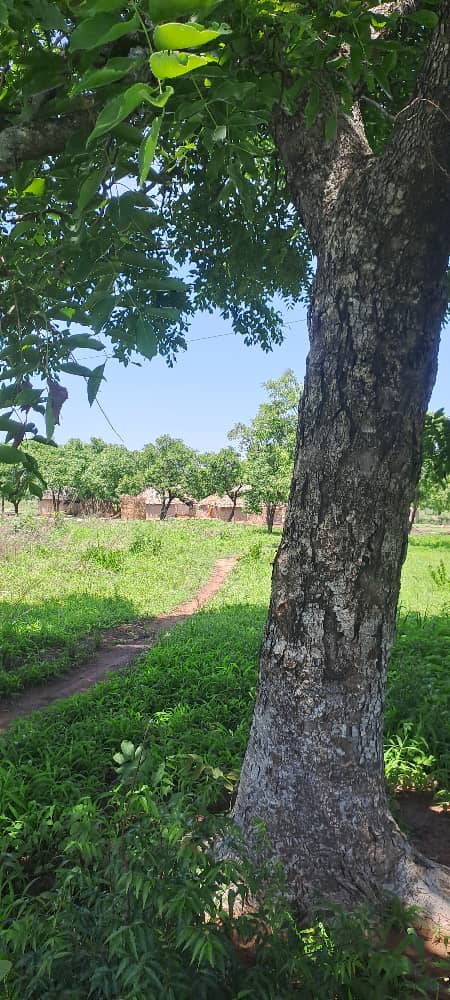
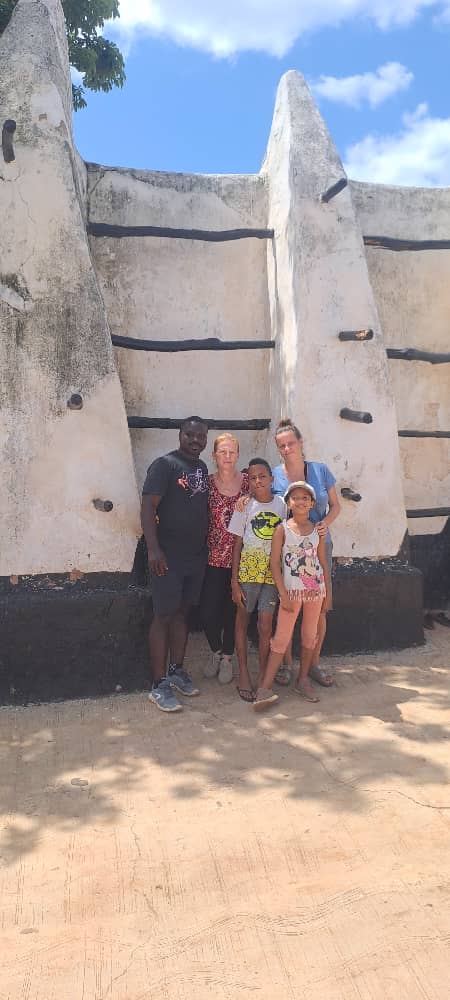
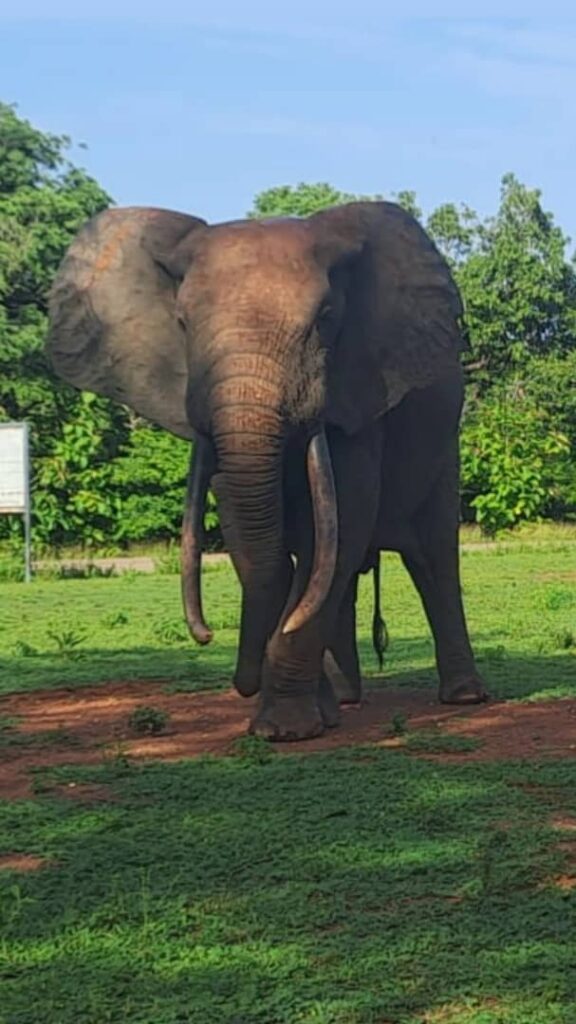
Wildlife in Mole National Park
As mentioned, we stayed at Belgha Hostel, a lodge we also recommend in our e-book that features two detailed travel itineraries and plenty of handy travel tips! Click here to request your free copy. It was wonderful to stay here as a family. We had one of the two dorm rooms (a double bed and two bunk beds) all to ourselves.
Emmanuel runs the hostel with great enthusiasm, and he’ll take you anywhere in his tuk tuk. It’s quite a party, especially with the great sound system on board! The first time we heard Emmanuel arrive, we could already hear “Awimboa, awimboa, in the jungle, the mighty jungle” from afar — quite fitting, haha.
The next morning, Emmanuel took us early to Mole National Park. I’ve already written a blog about Mole before:
Despite it being the rainy season, we saw elephants — even up close. We also spotted various species of antelope, warthogs, yellow-green monkeys, Mona monkeys, an impressive Nile monitor lizard, and beautiful birds.
Interestingly, we didn’t see any baboons, probably because we stayed away from the staff quarters where they usually hang around.
In the afternoon, we played games and made use of the bicycles at Belgha. I rode a bike with my son for the first time — a truly special moment I will never forget!
Belgha took us to the village of Mognori
The next morning, Emmanuel took us in his lively tuk tuk to the village of Mognori. Mognori is a small, authentic village near Mole National Park, where you can paddle a wooden canoe along the river and experience local village life. The eco-project was set up by the community itself, with support from USAID, so your visit directly contributes to education, health, and sustainable initiatives. You’ll learn about shea butter production, traditional customs, and enjoy stunning nature and warm hospitality.
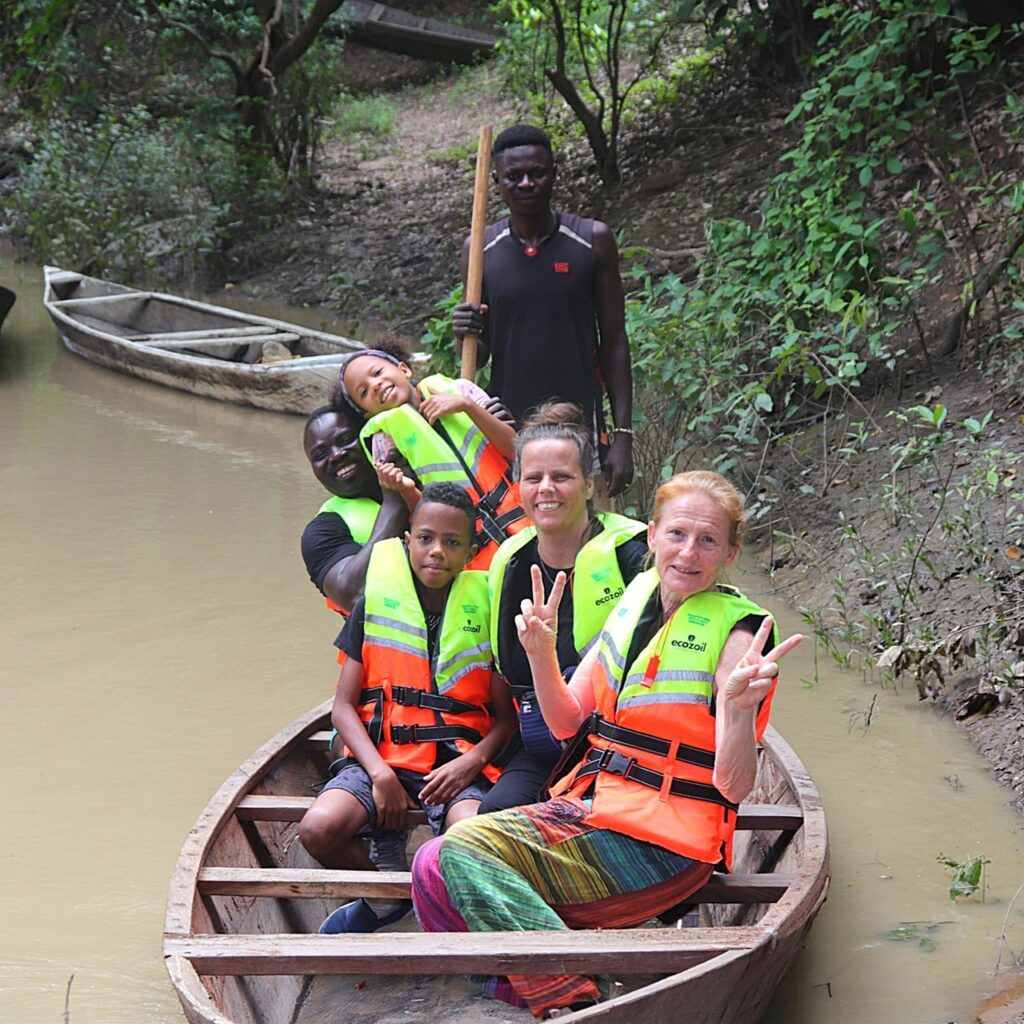
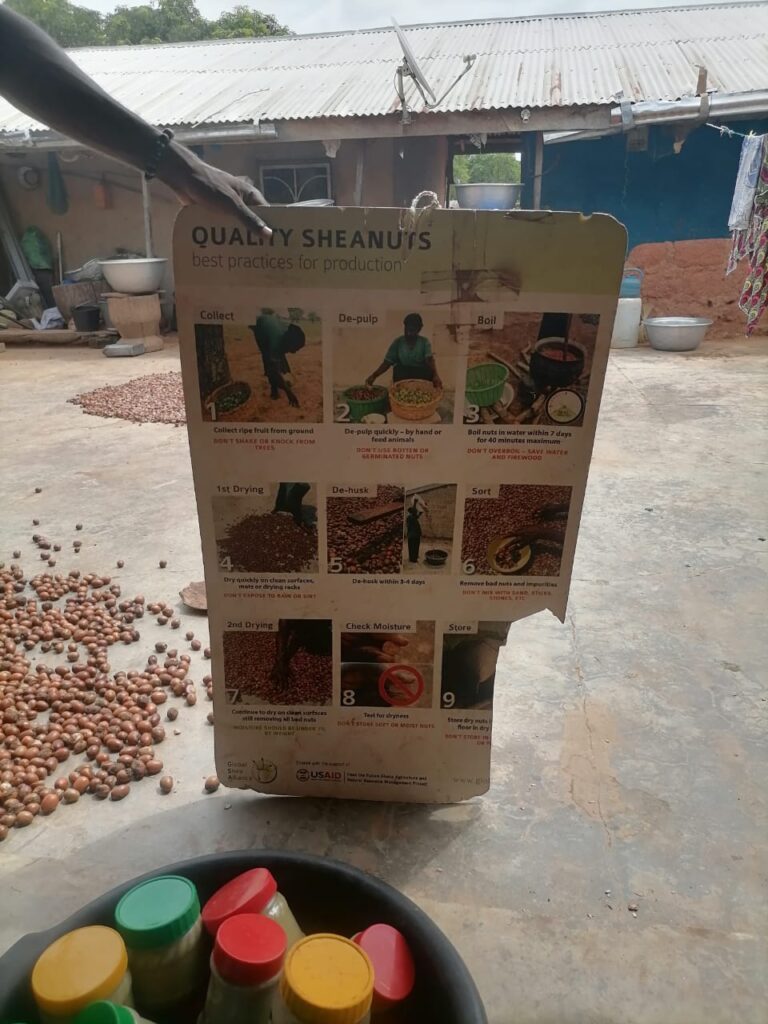
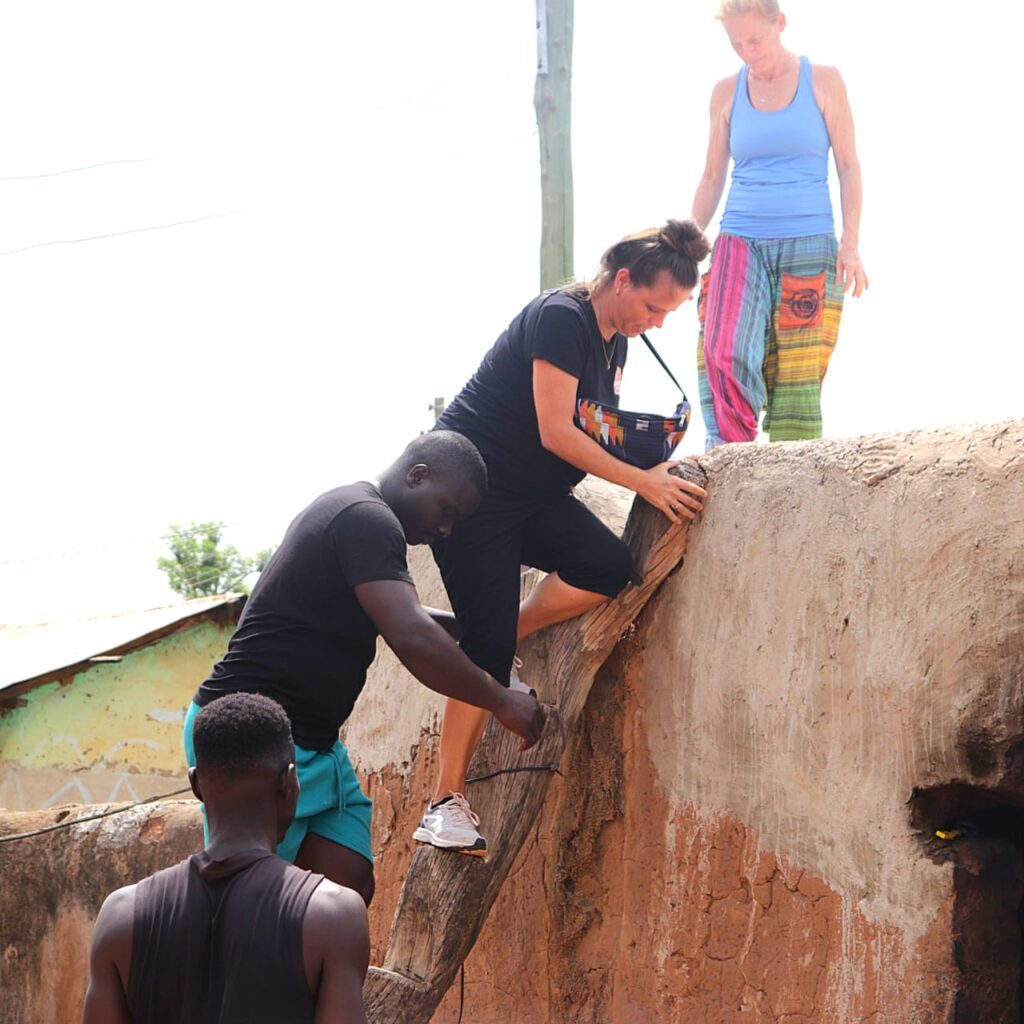
My sister isn’t fond of boats, but she went along anyway (and ended up going twice more later on this trip!). Apart from beautiful birds, we didn’t see any other animals, but the trip was lovely and, in my opinion, could have lasted longer. After the canoe ride, we were taken through the village where Emmanuel (a local guide wasn’t available) explained how shea butter is made and showed us around the rest of the village.
We spent the rest of the day very relaxed, although the bike ride with my son was a bit less peaceful when very dark clouds rolled in while we were in Larabanga. Luckily, we made it back without getting wet!
From Mole to the West: Heading Towards Wechiau
After a warm farewell to Emmanuel and the rest of the staff at Belgha, we set off westward. It was exciting since none of us had ever been there before. We followed the road toward Wa, which at first glance wasn’t too bad. We passed Sawla, a town that had come up in the kids’ history lessons as an important trading hub. It’s still quite bustling today!
We stopped for the night in the town of Tuna. The hotel was very local, and in our room they had forgotten to put the top mattress on the box spring. Luckily, my sister and the kids had better luck with their rooms.
From Tuna, it was just over an hour’s drive to Wechiau.
Searching for Hippos at Wechiau Hippo Sanctuary
What should have been a one-and-a-half-hour drive turned into nearly four hours. What an adventure it was, navigating increasingly narrow paths that had turned into gullies from the rain. The few people we encountered were quite surprised to see us. Fortunately, we had the phone number of a guide from Wechiau. Abudi assured us we were on the right track, so we trusted him—even when our network provider insisted we were in Burkina Faso.
Eventually, we reached the headquarters in Wechiau. After an interesting explanation about the project, Abudi took us by tuk tuk to the Black Volta River. There, we boarded a wooden c
anoe. These canoes are also used by locals to cross the river into Burkina Faso, as the river forms the border here. We even saw a motorcycle being transported on one of the canoes!
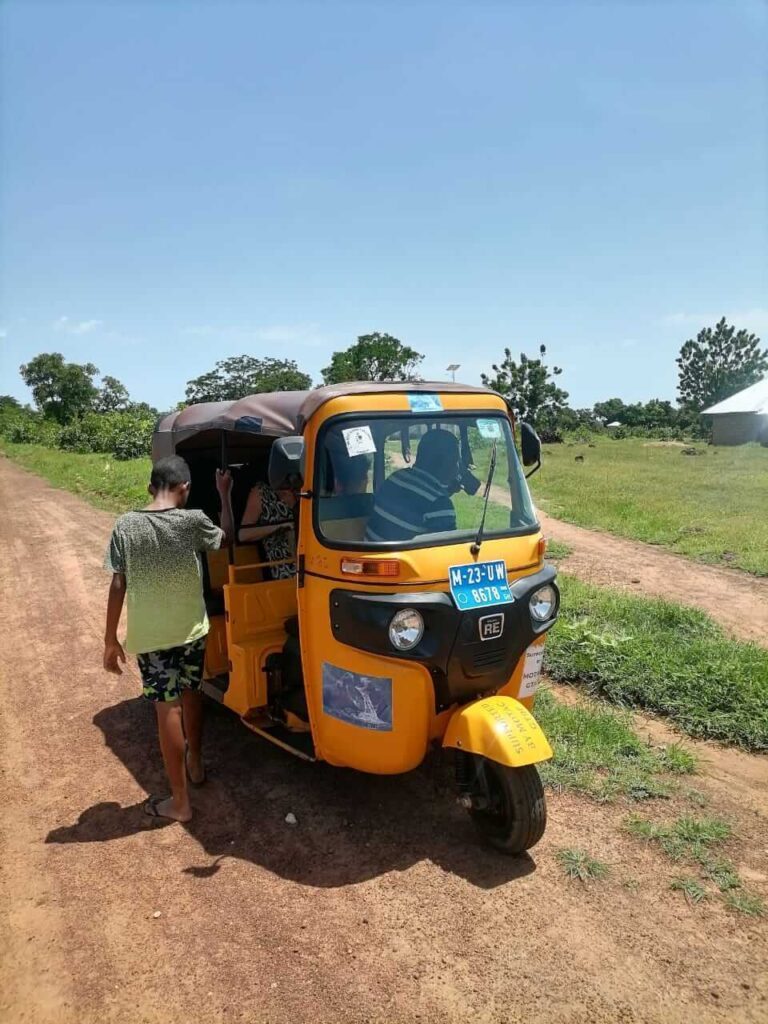
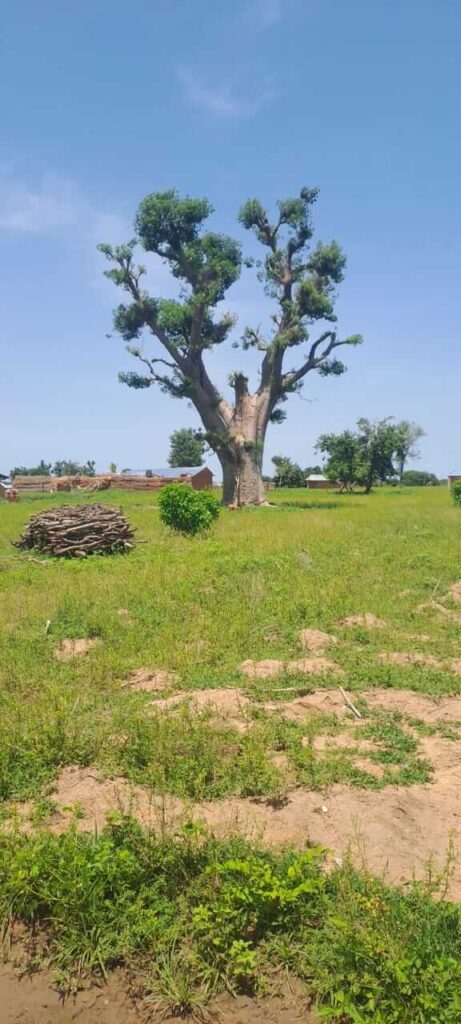
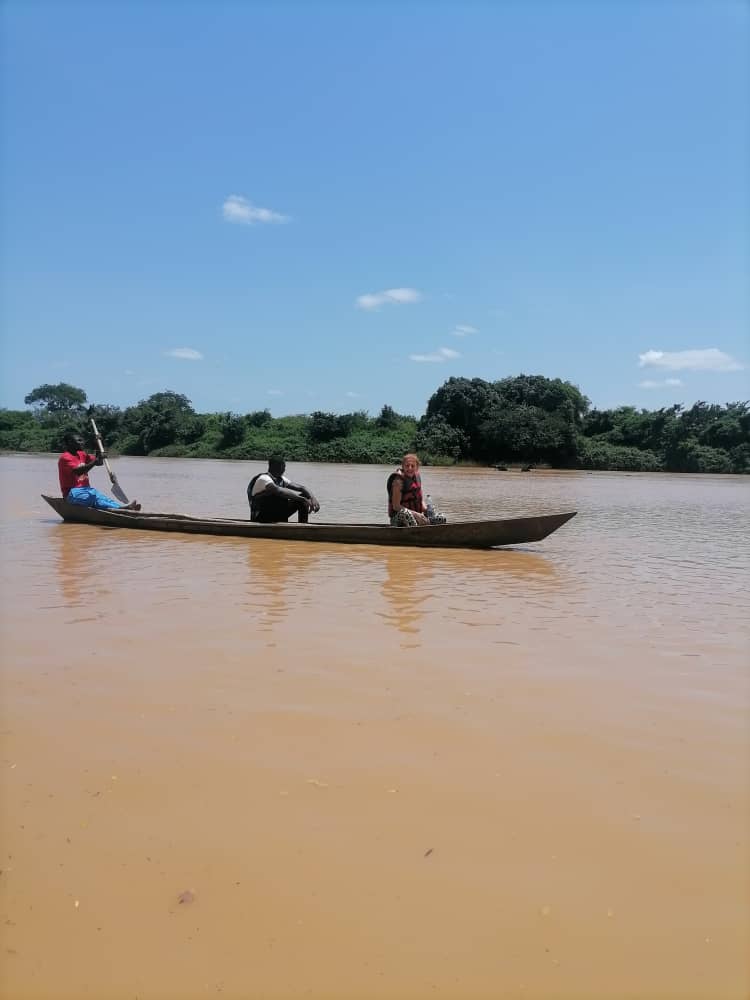
The guide told us that sometimes they have to paddle for up to an hour and a half before spotting hippos. And believe me: although the river ride is beautiful, the sun is merciless. I think the guide was even happier than we were when, after about five minutes, we already saw hippos. The photos don’t do this experience justice. We don’t have cameras with long lenses, but trust me—it’s incredibly special to see these majestic animals up close like that.
Overnight in Bole: a stop on the way to Bui
Abudi told us it really was just over an hour’s drive back to Tuna—if you don’t follow Google Maps exactly 😉 We continued our journey from the Upper West region back to the Bono region. Bui was our next destination. However, we ran into heavy weather and decided to stop in Bole. We thought Bole, a somewhat larger town and the hometown of the president, would offer more meal options. But the poor road conditions should have been a warning. The hotel we stayed at was brand new, and the bed was wonderfully soft—such a relief after the wooden planks of the day before!
The banku with tilapia was delicious, even though it took more than two hours to arrive.
It’s striking to see how not only the north but also the west of Ghana clearly differ in modern development and facilities.
Hippo spotting in Bui National Park
The next day, we continued our adventure to Bui, hoping to see hippos again. The Bui Dam, built on the Black Volta, has since supplied a large part of Ghana’s electricity. For the dam’s construction, several surrounding villages had to be relocated, causing many families to move to new settlements. The area around the dam is impressive and rugged, with vast savannas and forests forming a unique landscape.
Due to the dam’s strategic location and the road toward Ivory Coast running through the area, there are many checkpoints from police, immigration, and even the military. It quickly became clear that tourists are rare here; none of the officers knew where to find the Ghana Forestry headquarters. Eventually, we found it, and the guide accompanied us to the boats. Forestry doesn’t own its own boat but rents a motorboat typically used as a ferry or fishing vessel. There was a small hole in it, but thankfully not big enough to make my sister—who doesn’t like boating—worried.
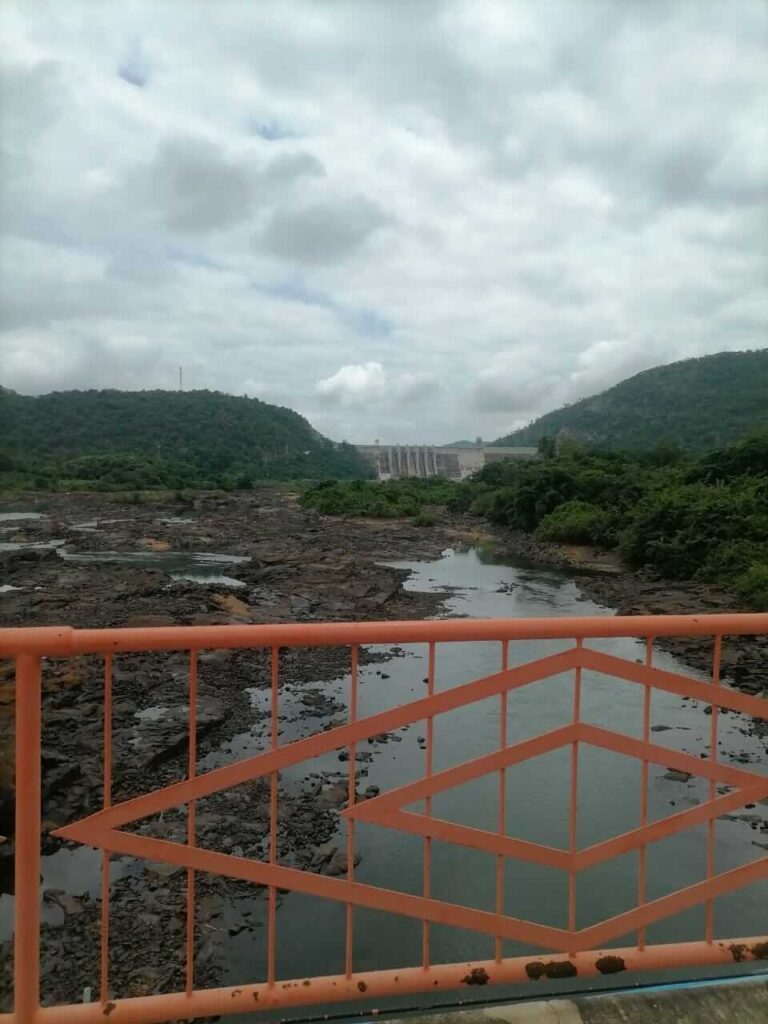
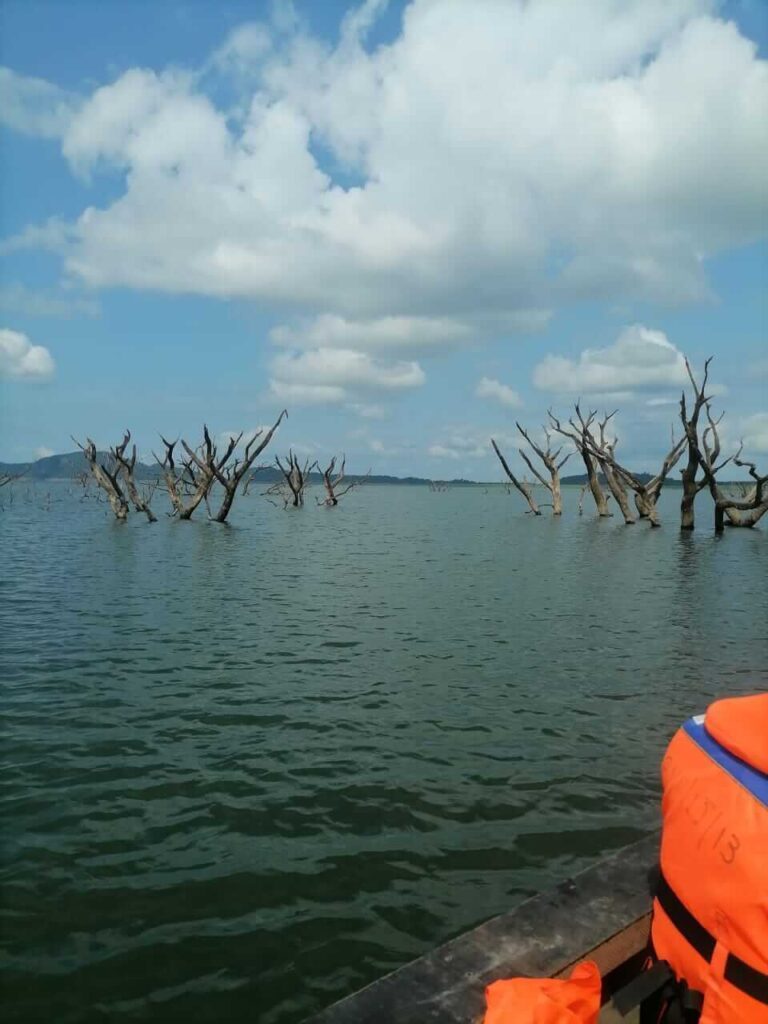
The water level was fairly high, but many treetops still stuck out of the water. It’s such a strange feeling to be paddling over lost villages. We spotted the hippos quickly. They were just about to come ashore, but because we approached, they stayed in the water. A shame, but of course, you can’t force them. The dam has divided the hippo community into two groups; about 25 hippos live in the area where we paddled.
We stayed in a guesthouse within the local community, where many people gathered in the evening for drinks.
Which place is better for a hippo safari in Ghana: Wechiau or Bui?
Wechiau Hippo Sanctuary
Wechiau is located deep in the Upper West region and is quite far, even if you take the right route. But the journey there is beautiful: baobabs, vast landscapes, and impressive skies make the scenery very different from, for example, the Ashanti region. If you don’t enjoy that kind of travel, Wechiau might be less suitable for you.
The ride by tuk-tuk followed by a canoe trip on the Black Volta is absolutely special; it feels peaceful and intimate. There is a simple guesthouse in Wechiau itself. Personally, I wouldn’t choose the treehouse/lookout post — it looked quite rundown. The great thing is that this is a true community project, where the proceeds directly benefit the local community. We paid 700 cedis for the boat, tuk-tuk, and guide, plus a tip for the canoe paddlers and food for the guide. Besides the hippo safari, you can also go birdwatching, visit community projects, or even stay with locals (homestay).
Bui National park
Bui is about a four-hour drive from Kumasi. Here, besides the hippo tour, you can also enjoy activities like birdwatching or hiking. I found the experience quite expensive: the boat ride costs 1,050 cedis, regardless of whether you are alone or in a group of seven. On top of that, there is an entrance and guide fee, which brought the total to over 1,300 cedis. The trip itself moves fairly slowly towards the hippos, but there were many other people on the boat and a lot of talking, which made it feel less intimate. After seeing the hippos, the boat quickly returned, while I personally would have liked to go a bit further.
Conclusion
If you’re looking for a unique and peaceful experience where your visit directly supports the local community, I would choose Wechiau. If accessibility is more important to you and you prefer to combine it with other destinations in central Ghana, then Bui can be a good option — but expect less of an intimate, small-scale setting.
Would you like to discover these special places yourself?
Our comfortable BWO vehicle, driven by an experienced chauffeur/guide, will take you safely and relaxed to Wechiau, Bui, and other unique destinations. Contact us for more information or to plan your own unforgettable journey through Ghana!
Visiting Owabi Wildlife Sanctuary
Owabi Wildlife Sanctuary was the final highlight of our trip. We spent the night at a local guesthouse that didn’t serve food, so in the rain, we set out to find the village’s only small eatery. Thankfully, the jollof rice and indomie there were delicious!
Google Maps tried to guide us to a half-crumbled house and declared we had arrived. A resident redirected us, and after navigating some nearly impassable paths, we reached the Ghana Water Company headquarters—but not the Owabi visitor center. Following a series of blue lantern posts down more rough roads, we finally arrived. Aside from a security guard, no one was around. Calls to the contact numbers went unanswered until two staff members showed up after a while—they had been out getting food in the village.
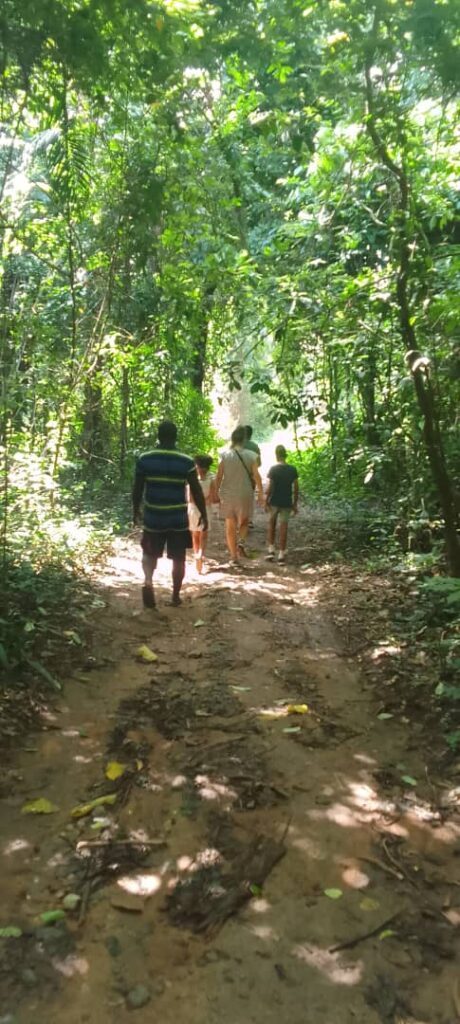
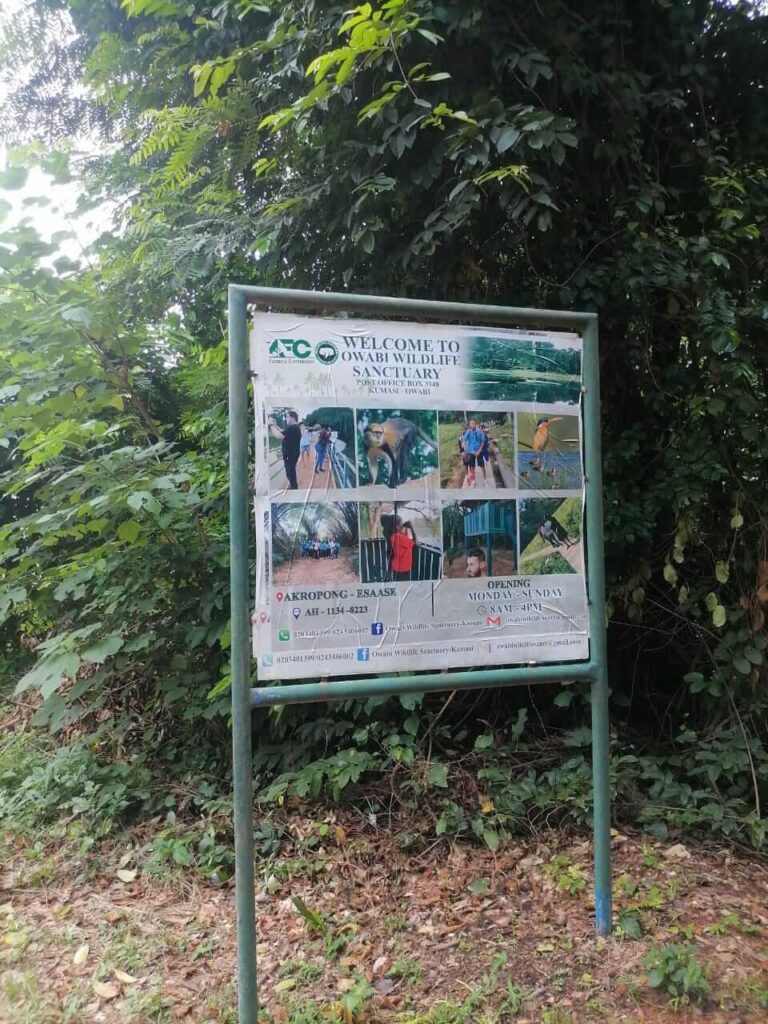
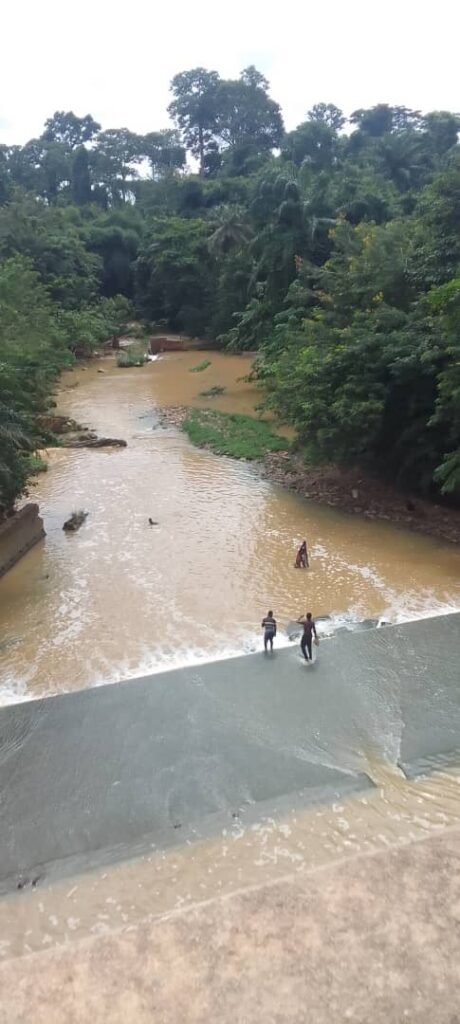
We walked with one of the guides through the park to the Bamboo Cathedral. Along the way, we crossed old water pipes and a wooden walkway/bridge. It was very beautiful, but unfortunately, we didn’t spot any animals. We returned the same way and then got into the guide’s car to visit the Ghana Water Company headquarters. There, we walked along the dam wall and watched some boys fishing. We also saw some beautiful birds.
To be honest, I was glad that Owabi was more or less on our route, as the long drive wasn’t really worth it for me. We felt the sanctuary’s main purpose is to protect the water dam strategically. Perhaps the experience would be better if the guide wasn’t secretly very hungry.
The guide then directed us the right way, and instead of circling for an hour on tiny, slippery roads, we were on the main road to Kumasi within five minutes. We stopped at Kumasi Mall and, after a wonderful trip, were very happy to be back home in our own beautiful surroundings.
An Unforgettable Road Trip Through Ghana
What an adventure this was! From sacred monkeys and impressive rock formations to spotting mighty hippos and discovering peaceful bamboo forests — this journey showed us even more of Ghana’s diversity and beauty up close. Sometimes challenging, sometimes downright hilarious, but above all unforgettable.
We are grateful to have shared these special moments as a family. Moreover, we can now use our knowledge even better to help travelers discover Ghana in an authentic way. Would you like to explore unique places like Wechiau or Bui yourself, but without the stress of planning routes and transportation? Feel free to contact us — we’re happy to help you plan your unforgettable trip!
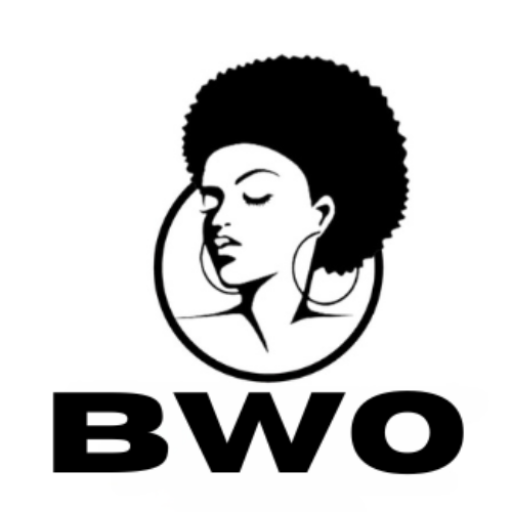
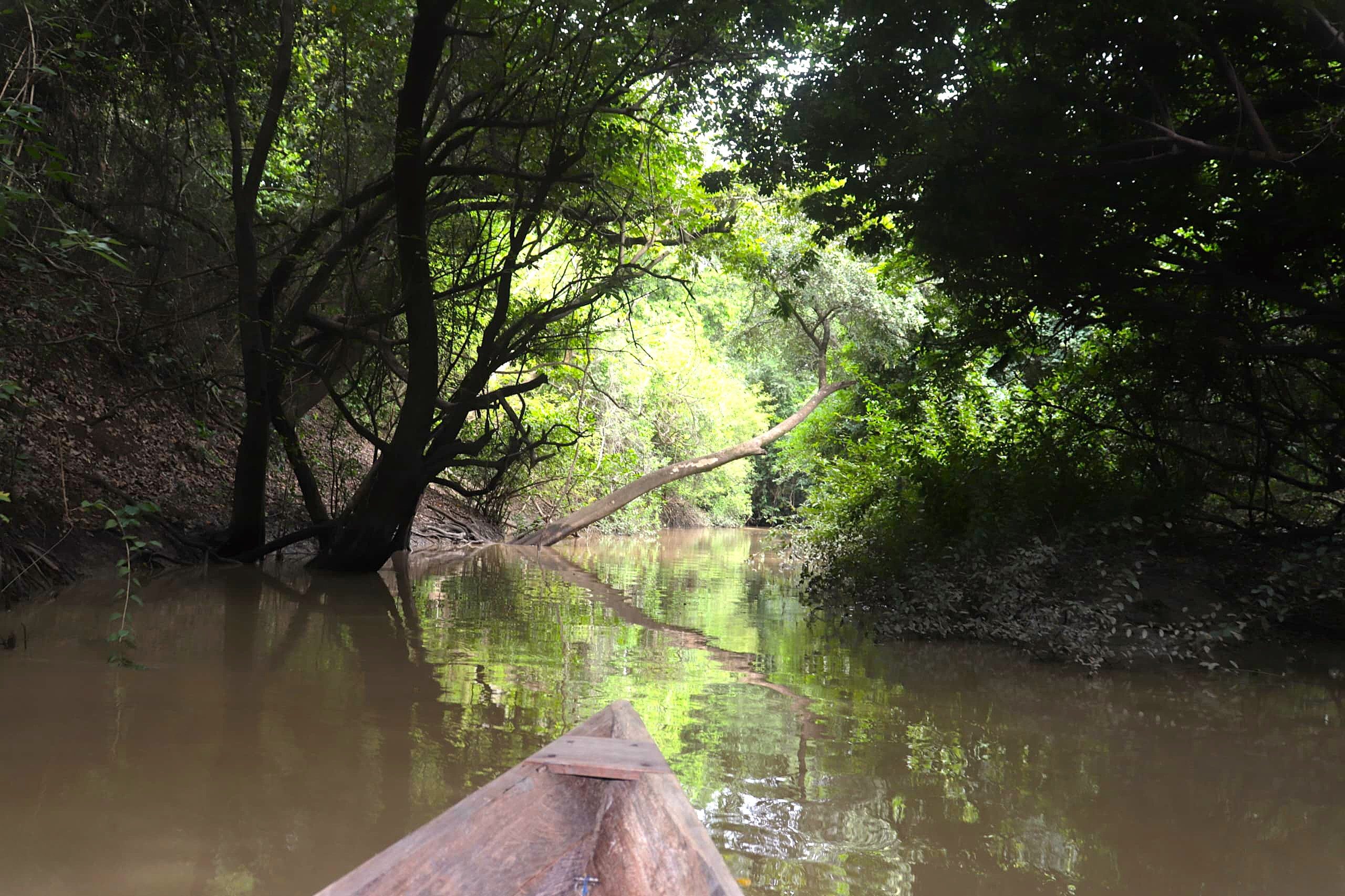
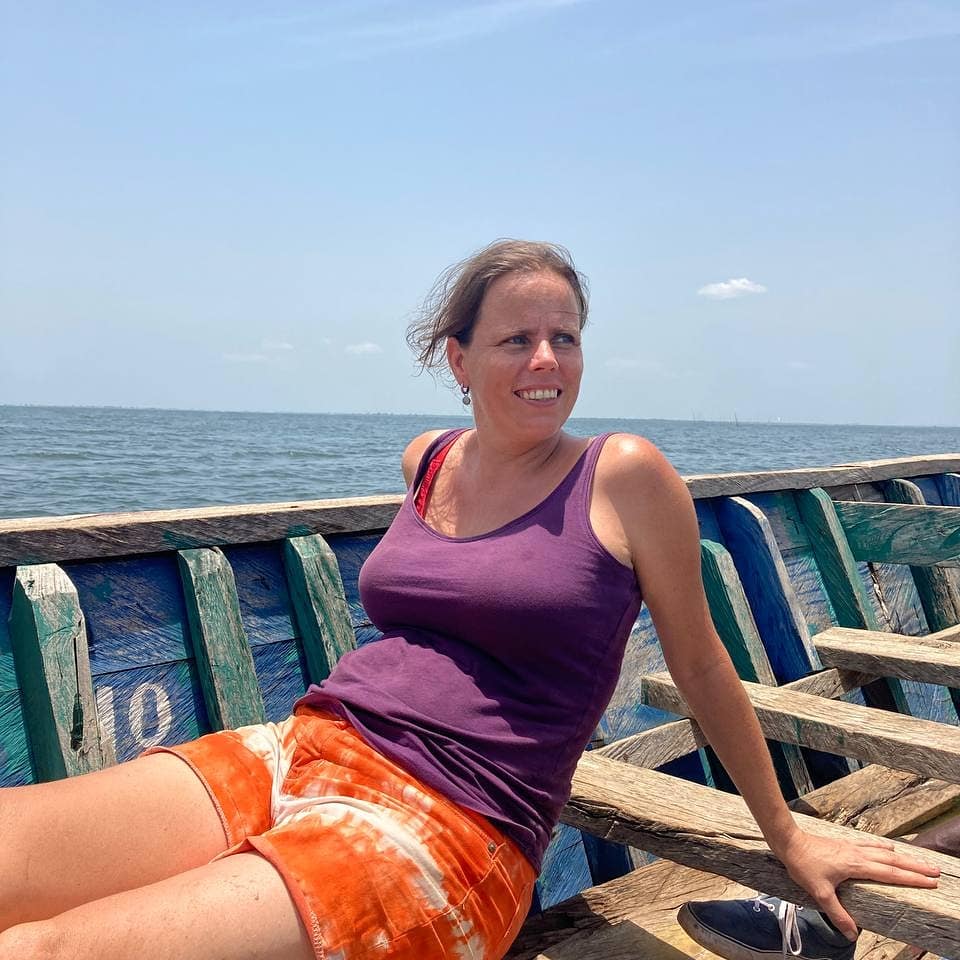
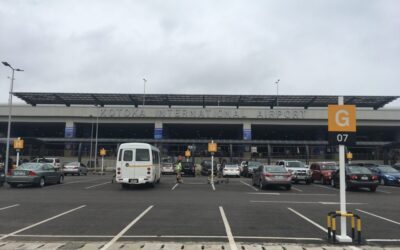
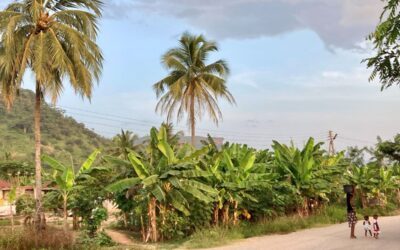
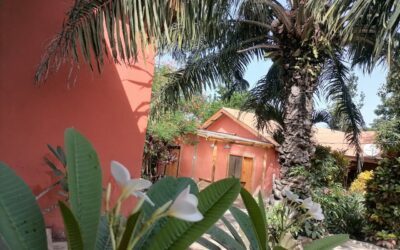
0 Comments